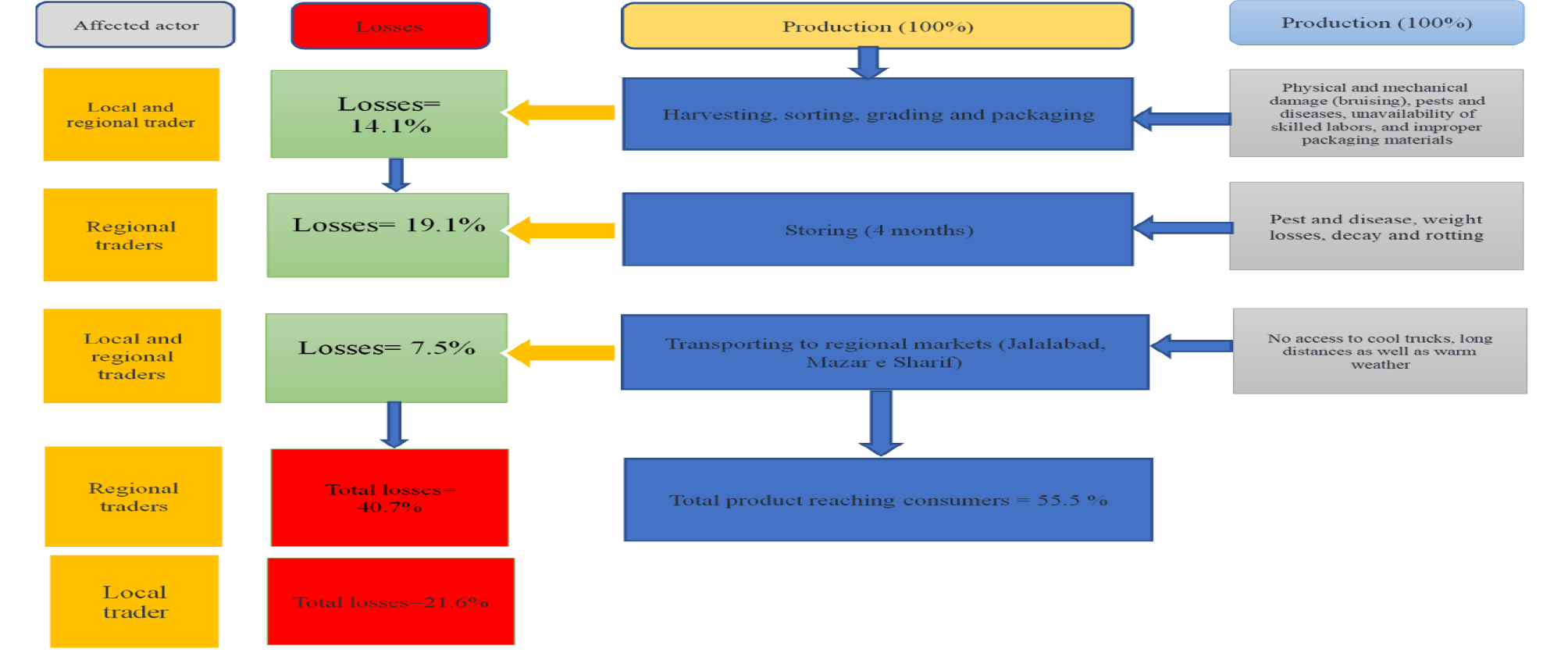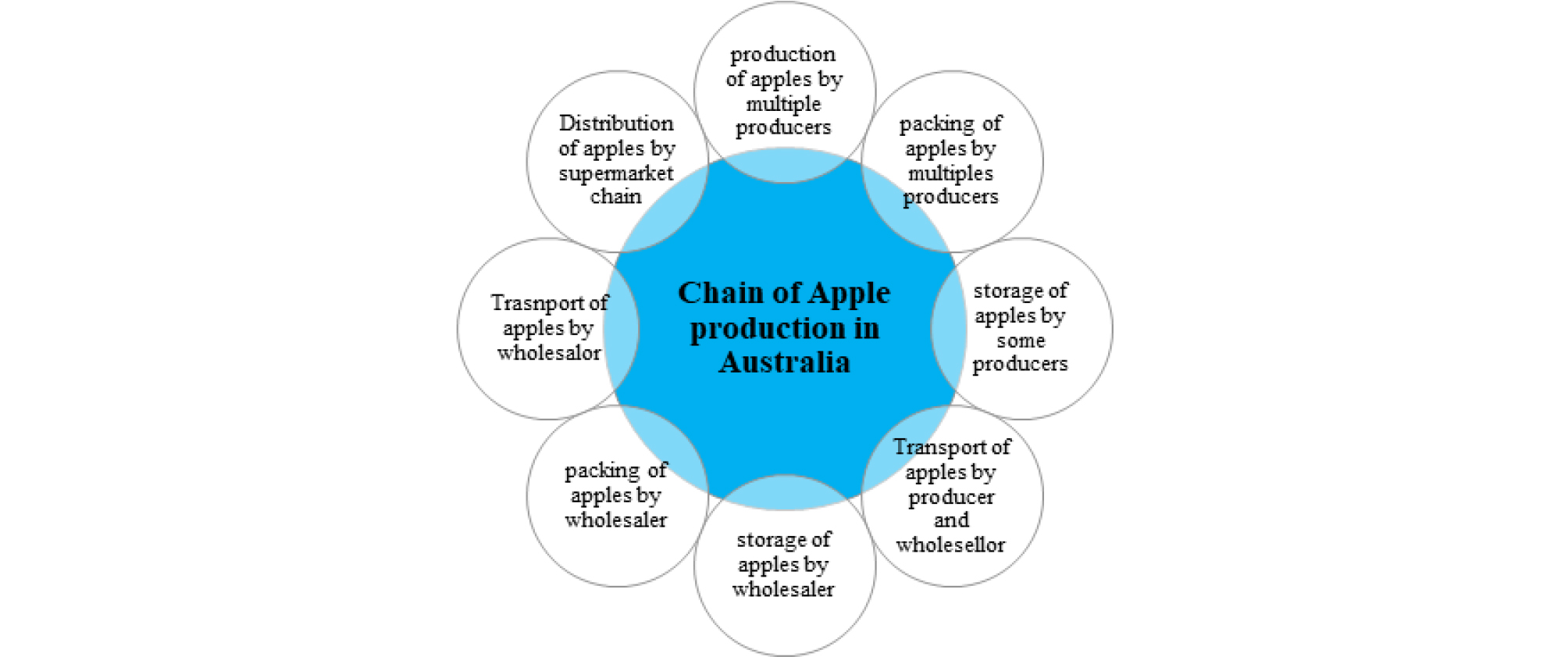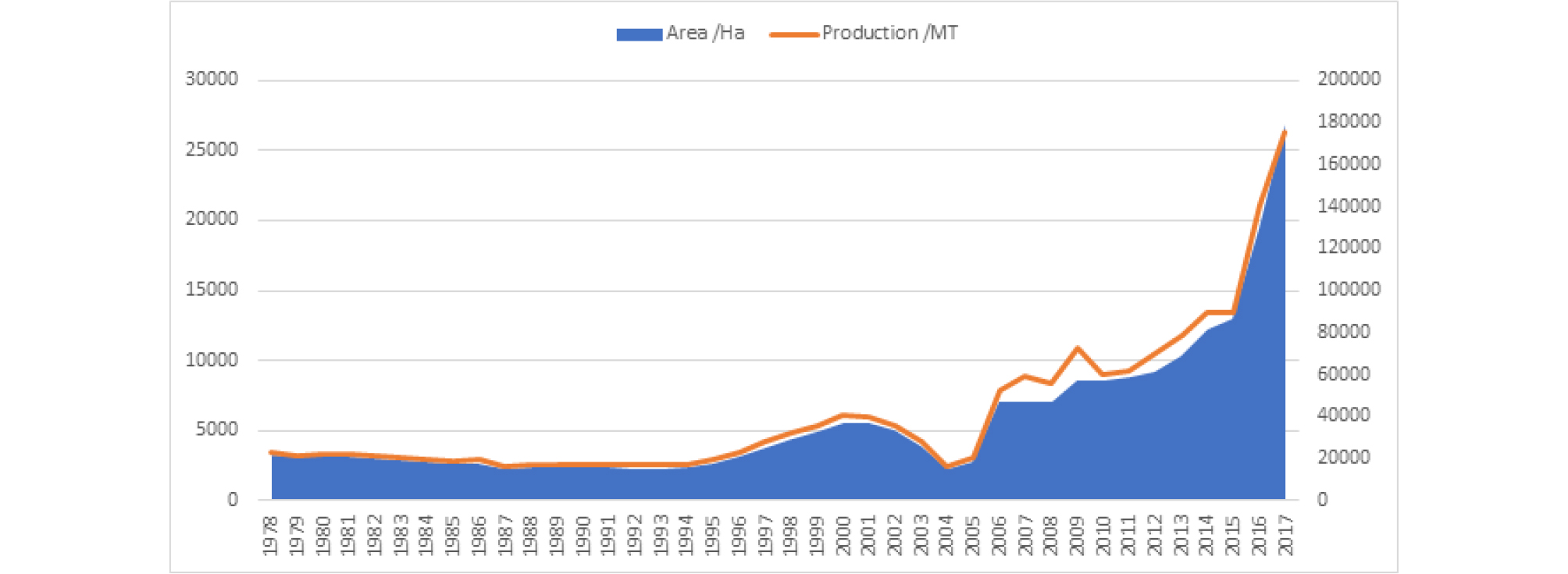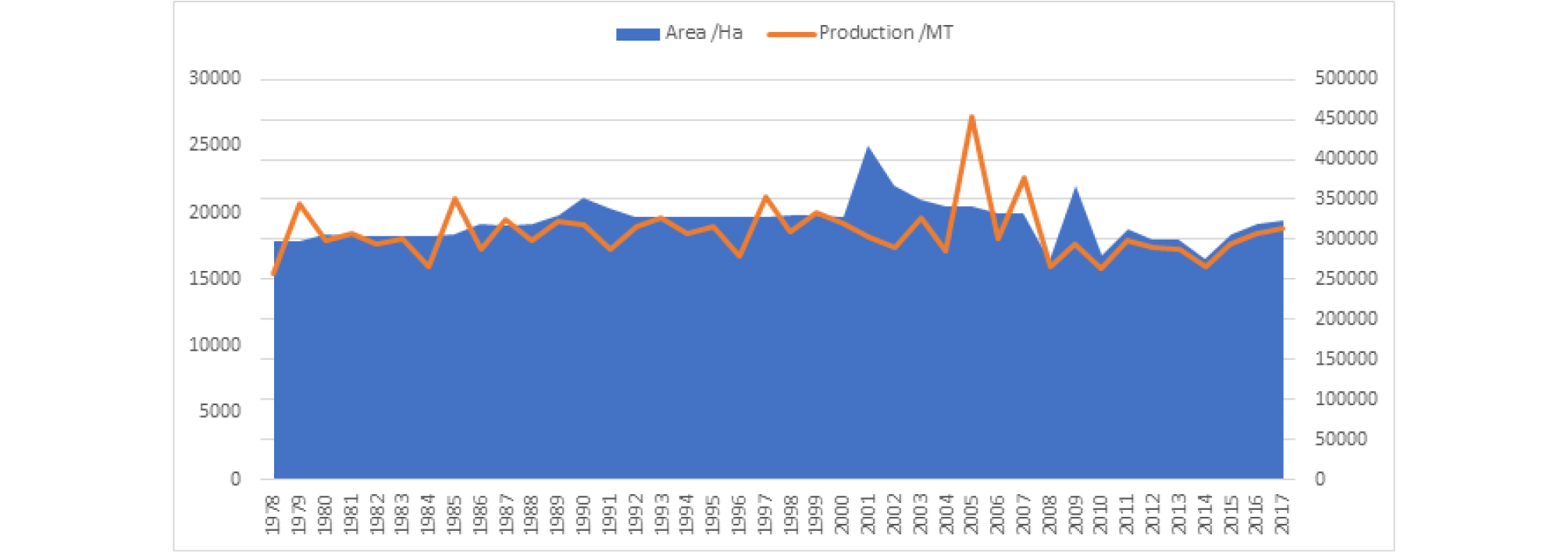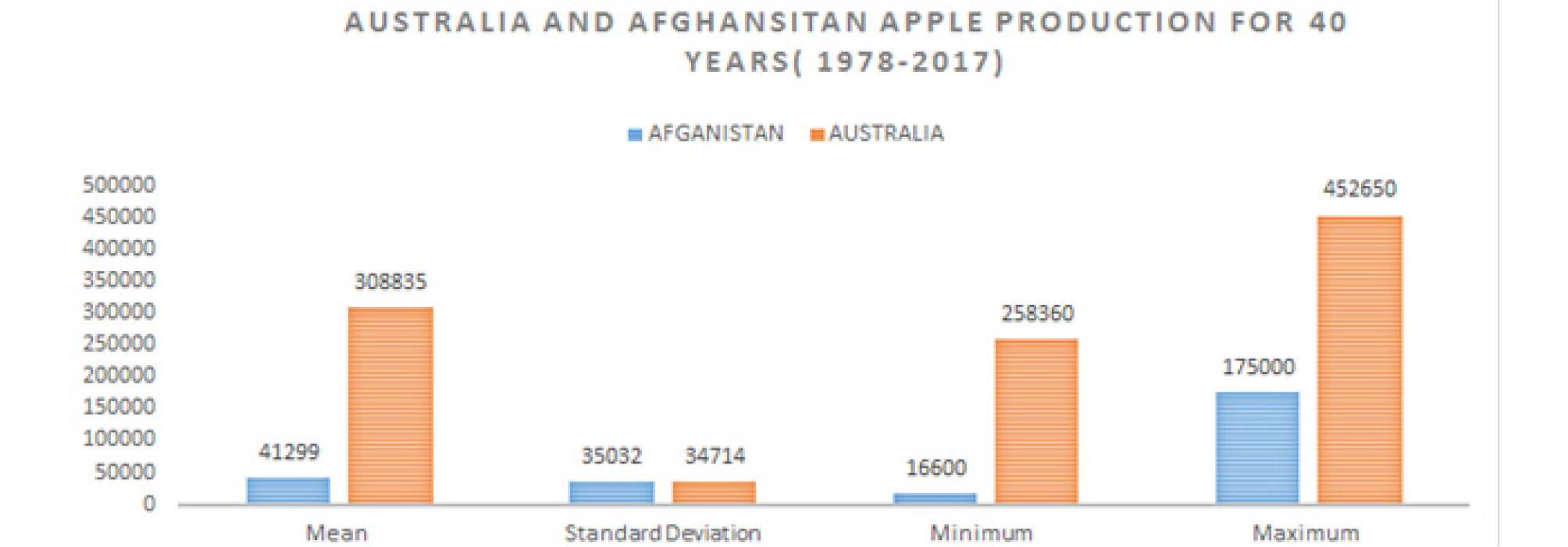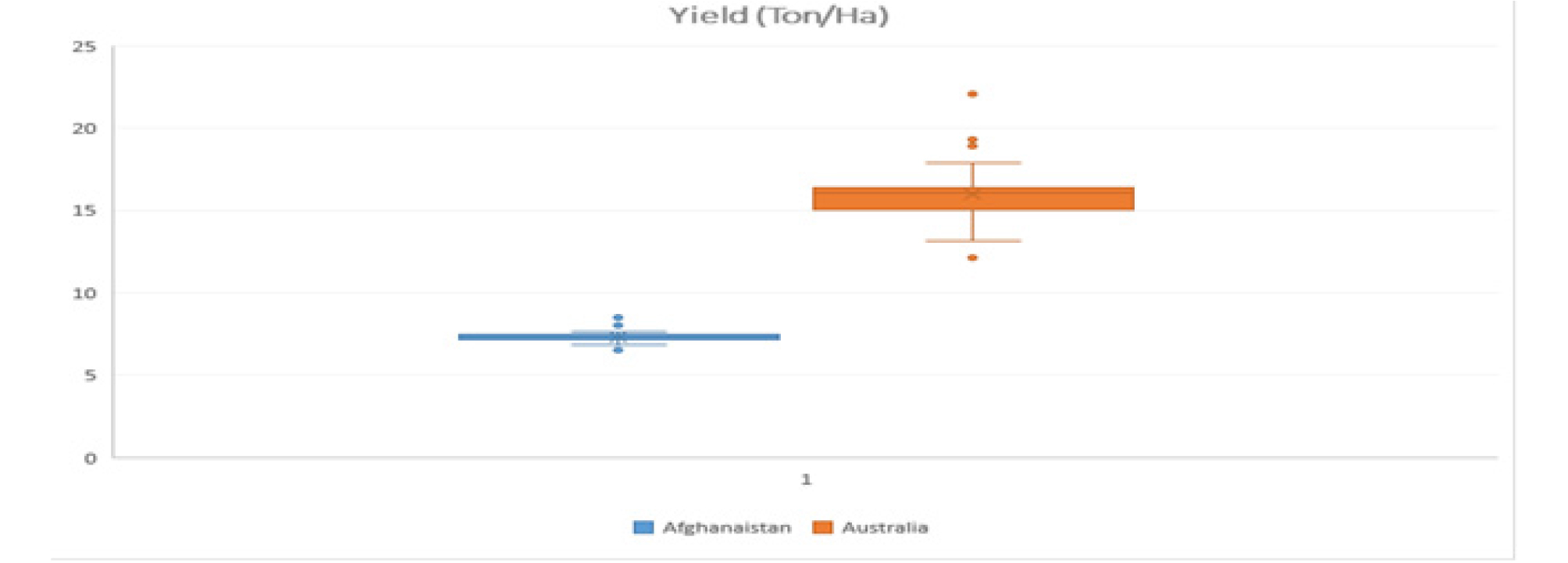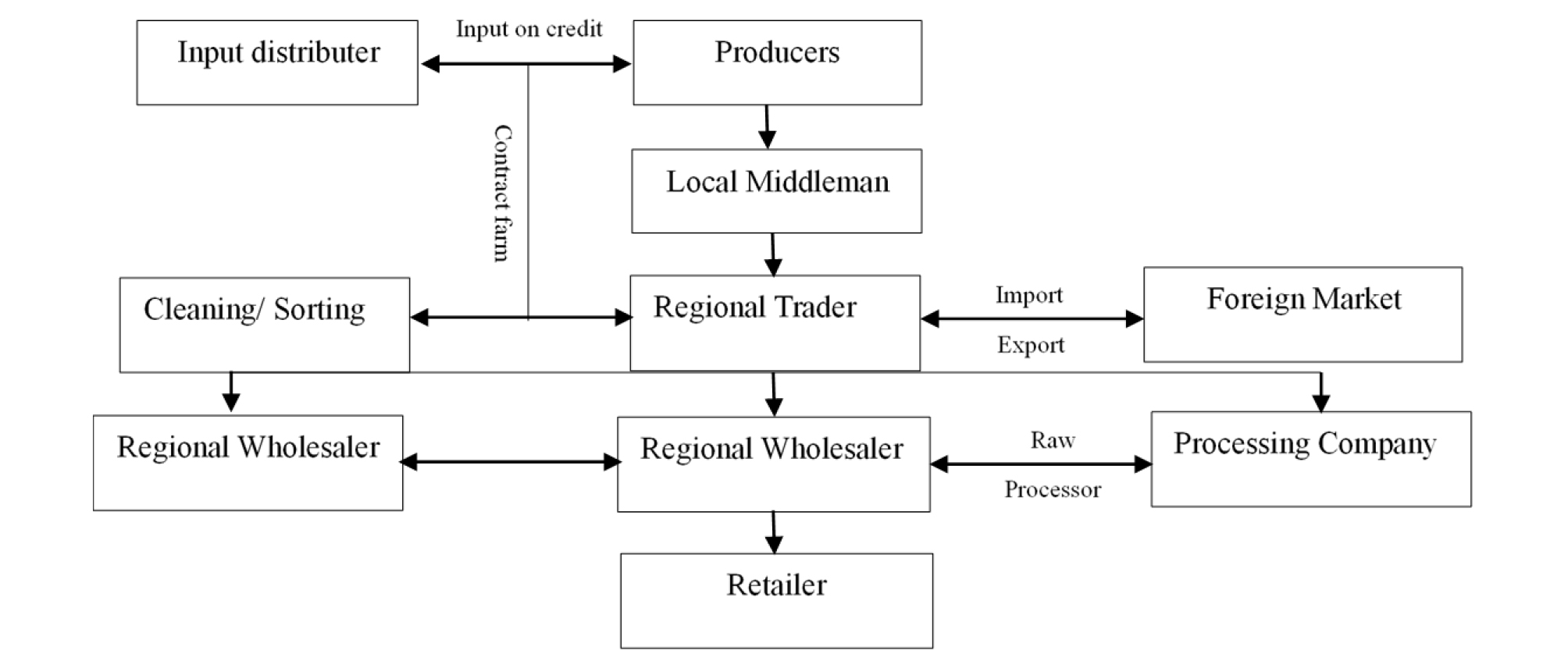Introduction
Ending poverty everywhere is the first United Nation’s Sustainable Development Goal (SDGs). That is concerned with boosting income, alleviating poverty and shaping the flexibility of those people who still live in starvation, particularly in Afghanistan.
Afghanistan’s economy relies largely on agrarian and the agriculture sector which make important contributions to its economy, is accounted for about a quarter of national GDP and almost 72% of the people are related to it. Nearly 90% of them are poor AND circuit lives in rural areas. In addition, agriculture plays a key role in their livelihoods, provided income for 49% of all households and is the potential source of income for approximately 40% of the total workforce. The number of full-time equivalent occupations in major fruits farming enterprises is estimated at 2.5-2.7 million, or 3.2-3.4 million when the jobs created through linkages from farm to the rest of the economy. The agriculture sector and its related activities will remain the biggest employment of rural people for the foreseeable future and the best hope for creating additional works.
The ultimate goal of agricultural activities is economic growth to improve the welfare of rural households through raising farmer’s income. This goal can be achieved among others economic indicators by increasing agrarian productivity. The important agricultural crops in Afghanistan, especially cash crops are apples, pomegranate, grapes, apricots, pear, peach, etc. Government of the Islamic Republic of Afghanistan (GoIRA) has recognized that agricultural development is key priority for employment creation, improvement livelihood, capital accumulation and economic growth. World Bank and the government acknowledged that increases in agricultural production and market access for small-scale farmers should be a target for rural economic development and national economy (World Bank, 2014).
However, Afghanistan farming system is conventional, conducting in subsistence or near subsistence structure. The main constraint is limited commercial varieties, technology, weak capacity and skills for efficient management farming system (FAO, 2012). Mixture of plants in farming system consists of several varietal problems such as lack of research and inadequate extension services caused by inconsistency in quantity and quality control, low productivity, particularly apple yields (Verma, 2014).
Likewise, market opportunities are constrained by limited agro-industrial capacity for processing fruits particularly apple (e.g. canning, freezing, drying, and juicing), and opportunities for export are limited by poor postharvest management. A substantial portion of the value of horticultural products around 20% is lost due to a lack of storage facilities, however, standard packing and handling practices remain rudimentary (World Bank, 2014).
Afghanistan has a strong advantage in the production of specific fruits, and has strong potential for exporting and income generation, contributing $1.4 billion to the national GDP, equivalent to 34% of agricultural GDP and 6.7% of national GDP (World Bank, 2014). Currently, it is extending to 360 thousand ha, covering almost 14% of the total irrigated area and involving more than two million people. The country’s different topographical and climatic conditions allow for a wide range of cash crops to be grown in all growing season of the year. Although there has been a positive trend in exports of Afghan fruit commodities including fresh, dried, and semi perishables products. The major markets are domestic, neighboring markets, and high-end markets in Europe, the Middle East, or more distant Asian countries. Major fruits that have been exported are grapes, apple, apricot, and pomegranate.
In the case of apple, the conventional farming system is a major problem and has been affected the quantity and quality of production and reduced efficiency of input resources for apple. This directly impacts rising unemployment, food insecurity, poverty level and migration. Addressing poverty, apple farmers livelihood is an important issue in current situation of Afghanistan, particularly 9 provinces of the country in the area of 27 thousand ha is a zone of growing apple. Most farmers working in the area have 0.4ha on average, produced fruits for making income through distribution to domestic markets and exporting abroad (Verma, 2014). However as population is raising at a 2.4% growth rate, access to natural resources particularly arable land is limiting. This requires a resetting of policies and practices such as how subsistence farming transforms and upgrade to a commercial system to boost up production and to generate farmers income, ultimately to improve their welfare, especially for small-scale farmers.
The main objective of the study is to determine the new way to shift from conventional to commercial farming system to intensify productivity for supporting small-scale apple producers. The specific objectives are to characterize factors in the current apple production system, to identify the major essential factors influencing on optimal production, and to analyze the effect of production by shifting to intensive high density system.
Factors that Effect Apple Production
For obtaining optimal productivity of apple, investment in intensive high density system is required to accompany with developing strategy with major component involving production, postharvest management and exporting. Thus, planning is initial step for collecting data regarding adaptability of apple varieties, in the same way, climate information and ideal site for apple trees is an important factor for proper planning. So it is imperative to assess site before deciding for planting in order to check some of the necessary conditions such as soil quality, water resources, topographical situation, drainage status, etc. However, fertile soil increases productivity, soils with high levels of organic matter are preferred, both due to natural fertility and improved water-holding capacity. Most new planting systems use tall trees as a natural way to manage growth, and fertile soil with good water holding capacity will make it easier to achieve tree height in less time.
In the mean time, intensive high density farming systems consider commercial varieties and standard rootstock which is adaptable with the region (Parker, 1998). The yielding capacity and apple fruit quality on the tree can be determined by natural factors such as soil and climate which effect processes of nutrition. For efficient use of natural factors, it is imperative to domicile commercial and standard apple variety on the most appropriate soils with ideal organic compost and organic factors of fertility that is evaluated by the soil of land where orchards are laid out.
In the long-term, it is required to sustain soil with a high level of fertility over many years for several generations of plantations on the same region that are chosen according to the appropriateness of soil and water source. To ensure optimal productivity, it is essential that the soil remains fertile with sufficient nutrition according to their potential productivity, and also it is essential to improve soil quality with organic ingredients for improving biological activity (Kopytko et al., 2017).
Other factor can be irrigation system for quality of apple, particularly in the initial years. Water can be delivered through drip irrigation in a small amounts via small nozzles which is more efficient and cost effective (Koech and Langat, 2018). Apple trees during the first 4 years to prevent biennial bearing is important for keeping an appropriate balance between vegetative growth and cropping as the trees commence to bear. With precocious dwarfing rootstocks, young apple trees regularly overset in the 2nd or 3rd years resulting in biennial bearing as primary as the 4th year (Terence, 2014).
Optimal yields are achieved when the field has good light distribution throughout the tree canopy and a balance between vegetative growth and cropping. This can be accomplished by maintaining a narrow canopy shape through regular limb renewal pruning and development of pendant fruiting branches. For successful growing, maintaining a balance between vegetative growth and cropping by regularly renewing the fruiting wood on the tree is needed. For proper crop load management, obtaining 50 cm of leader shoot growth in the first year, 75-100 cm of leader shoot growth in the second is also necessary. When this is combined with minimal pruning and a precocious rootstock, significant production is obtained from the second to the fourth year which will limit vegetative growth in the forthcoming years (Long and Schupp, 2018).
For the purpose of comparison with Afghanistan apple, Australian apple farming is utilized since the system is intensive high density and the system is various based on there regions with the range of 2,500-4,500 trees/ha. Likewise, the intensive production is innovative for effective use from limited resources under Australian conditions. The apple commodity which is produced under intensive high density farming enterprise has more advantages than that of Afghanistan since Australia obtains much more yields in second to third years. The Australian system compared to Afghanistan can be achieved higher yield per hector over local varieties, earlier production, higher commercially acceptability, higher nutrition and prices for distribution in the markets. Overall, intensive high density apple farming for caring and maintenance and overall yield potential per hectare, as a business accompanied by strong leadership and leading technical operation with nutrition management, can expect earlier return on investment (Julie Dart, 2008).
Conceptual Framework
This study is conducted based on the secondary time series data of 1978-2017 for descriptive analysis of apple production of Afghanistan and Australia. In Afghanistan, apple farm enterprise is conventional or near conventional with traditional practices with hand tools, mostly in area of 2 acre (0.4 ha) land, and is led by experience-based approach harvesting yields either deals with local traders or wholesalers or direct distribution to the market in a form of a simple plastic bag or crate. That is due to lack of professional skills and access to materials and technology for achieving postharvest management. Therefore, storing and distribution of commodities from production areas to the markets are done by the traditional system losing profits (Fig. 1) (Horticulture strategy 2018-2023).
Afghanistan’s apple orchard farming is traditional system with plantation varieties imported during the past years, except some new dwarf rootstock in the last few years which growing well and produced huge yields. Thus, in a appropriate climate zone for apple growing, apples are among the crunchiest, sweetest, and largest in the region, mainly in central Afghanistan. These apples are distinctive for their size, deep-red color, high brix content, flavor and could be stored fresh up to seven months (CHAMP, 2016).
Over 85% of apple fruit consume unprocessed, whether being marketed domestically or exported abroad. In the meantime, apple can be processed for fresh juice and jam. In addition, small-holders are important players for productivity of apple and their output covers domestic markets and foreign markets that have been main source of farmers income (World Bank, 2017).
The current conventional apple orchard farming is dominant with improper space system of 120-150 trees/ha even up to 460 trees/ha. This apple orchard farming caused lower productivity and efficiency of using inputs (Verma, 2014). The conventional farming has dominated in apple production, and extension services are not operational that regularly providing technical training for farmers on different aspects of orchard farming management and technology dissemination. Particularly, farmers only access to smart phone for obtaining awareness from the input and output markets and communicate with processors, consumers and entire stake-holders in community. In the mean time, marketing is the series of services involved in moving a product from production to consumption and involves what customers want and supplying it to profit. The marketing of perishable products becomes increasingly important as the consumer’s increases and demanding are higher for consistent quality of fruit.
In marketing of apple in Afghanistan, farmers deal with local traders or wholesalers. Apple with basic postharvest management by wholesalers is distributed in domestic markets and exporting to abroad. Also, Afghanistan Chamber of Commerce and Industries (ACCI) is serving the advocacy and business facilitation needed for a burgeoning traders economy, leading voice of a dynamic, competitive, and rapidly growing Afghan traders. To facilitate and to accelerate domestic products, Afghanistan should have agencies in abroad for joint chambers to promote trade and strengthen the economic relationship between countries and stimulate domestic producers for expanding production (www.commerce.gov.af).
In the meantime, Australia has a long history in the potential productivity of fruit crops especially apple which are produced for consuming in domestic markets and processing in the industry (Horticulture Australia Council and Horticulture Australia Ltd., 2009). Apple farming is to be recognized more intensive, and the government has supported apple breeding program to develop new varieties with resistance to diseases, drought and meet consumers demand in the market. The apple growers producing crops healthier and using reduced chemicals and fertilizers (Simon Middleton, et. al., 2008).
In Australia, for intensive orchard farming, the apple variety selection is planned based on a number of considerations such as market demand, suitability of the variety to environmental conditions (rainfall, elevation, temperature, soil type, and chilling requirement), disease tolerance and resistance, and the intended market (fresh, processing, juicing). Beyond environmental and agronomic considerations, there are also business and farm profile strategy decisions that contribute to the variety selection. Intensive apple farming provides earlier harvests, higher average yields and easier management.
Australia produces on average under 300 thousand t/year, and around 73% of apple is consumed fresh with the remainder goes to processing and juicing, likewise per capita consumption is around 8.5 kg per year. In Australia, apples are harvested throughout the autumn. The technology and machinery are for land preparation and farming management are tractors, orchard sprayer, herbicide sprayer, slasher, Forklift, bulk bins and bin trailers, trellising, ladders, pruning equipment, dryer, netting (shade, hail, and bird), machinery shed(www.agriftuures.com.au) etc. The conceptual framework illustrates as a simplification for the understanding of orchard system in Afghanistan and Australia, and also of factors that effect apple productivity in both countries. Afghanistan yield is 7.5 t/ha compared to 16 t/ha in Australia (Faostat, 2017). The major factor of both countries that effect productivity is the farming system. The apple production system in Australia is summarized as in Fig. 2.
In Australia, due to significant competition in domestic markets, farmers look to produce high quality fruits with a good appearance in size, shape, and color, with freedom from blemishes, disorders, and diseases. However, maturity levels, harvest time, storage, packaging, price and delivery timing are key factors considered when selecting cultivar for the target market to meet customer requirements.
Descriptive Analysis
Descriptive methods are the most useful approach and well integrated, starting with finding hypotheses more clearly stated, then each hypothesis is addressed in the same order. Demanding agricultural crops, particularly apple commodity globally has been increasing due to an increase in population, income and diversity in consumption. The following chart showing the world apple trade trend;
Similarly, apple farming is one of the most dynamic in Afghanistan, generating massive income to farmers and contribute to national GDP due to an increase in demand in domestic markets and expanding exports to international markets, directly affected apple productivity in Afghanistan, because Afghanistan is an exporting country. Hence, following the trend, apple productivity increases based on areas and production for 40 years (Fig. 3).
Australia is a country producing apples with growing intensive high density system almost for domestic consumption and only export 1% to abroad markets.
In general, apple productivity in Australia from 1978 to 2017 displayed variability. The total production in 1978 was 258,360 MT, and it increased and maximized between 2004 to 2006 to 452,650 MT and the total production raised to 313,730 MT, this rising could be due to an increase in total area of land, improved variety, method of production, technology, and income (Fig. 4).
Based on the total apple production of both countries for 40 years summarized, an analysis of the mean, minimum and maximum of apple production are interpreted and explained (Table 1). The results of both countries descriptively analyzed for 40 years from 1978 to 2017. In Afghanistan, the mean of apple production is 41,299 ton, in the same way, the minimum production is 16,600 ton, while the maximum apple output is 175,000 ton. In the case of Australia, the mean of apple production is 308,835 ton, the minimum of apple production is 258,360 ton and the maximum apple production is 452,650 ton (www.faostata.org).
Table 1.
Australian and Afghan apple production (1978-2017)
Here the study specifically determined the differences between means, minimum and maximum apple production of both countries for 40 years, the mean of difference is 267,536 ton, the minimum modification of production is 241,760 ton and the maximum alteration is 277,650 ton in 2017. Thus, intensive orchard farming high density apple production with extension dwarf rootstock is significantly factor for higher production over conventional production system, more profitable and used input resources in a more effective way. Based on the aforementioned distribution, the summary of the above table mentioned in the descriptive chart below shows a big difference explicitly of the apple production of both countries for 40 years.
Also, Afghanistan apple yield per hector is significantly lower (6.5 ton/ha) in 1978 that could be local variety, climate change, infestation of pest and diseased, drought, low technical capacity, conventional farming system, poor nutrition management and domestic wars. In 2005-2017, yield increased to 9 ton/ha indicating an increase of 2.5%, this could be due to reformation of government policy, modernized technical operation, improved nutrition ingredient and extension of new variety. Afghanistan almost experienced peace which was effected yields and in the same way, Australia yield has been significantly higher than that of Afghanistan. The minimum yields in 1978 was 14.5 ton/ha and it increased almost maximized to 19 ton/ha in 2017. This showed an increasing up to 4.5 ton/ha, which could be due to variety and technology, nutrition ingredient, effective technical operation, extension of intensive high density plantation system, management, government incentive, and high demand in the market (Fig. 5).
In the same time, apple is a commercial commodity in Afghanistan exporting to abroad markets. The price of apple is almost cheap in domestic markets in comparison to global markets. One Kg of apple is $0.9 in time of harvesting while in international market the price is almost $8-$12. Therefore, shipping the apple commodity to a foreign market makes huge profit to farmers and national income (Fig. 6).
As showed in Figs. 7, 8, the price equilibrium of apple commodity is lower in domestic markets of Afghanistan while the price is higher in global markets. Hence, exporting apples makes more profits for all stake-holders in the chain including producing, packaging, transporting and exporting to foreign markets. In the mean time, the differences of yield of apple in both conventional and intensive production system is 8.5 ton/ha and, based on the prices in domestic market of Afghanistan, transforming from conventional to intensive system could be able to increase yield and as a result, farmers make significantly higher profits.
Therefore, investment in the apple production system is an opportunity for increasing income and improving the economy of the farmers in the future. As the initial investment is higher over conventional farming system, thus, investment should be programed the entire operation systematically including various analysis of markets, consumer preference, and future demand. In Australia, intensive high density farming has been planted with proper space, which avoided trees and branch falling. The system facilitates the management of trees and has been helpful to protect the fruit from harsh emergency climate and attack of pests in a timely manner.
Conclusion
Investment in an intensive high density farming is a critical factor for the Afghanistan apple industry. However, the investment should be made after a baseline survey comprising soil samples with details, water resources, topographical maps, drainage maps, weather information, long-term investment and production strategies as well. In addition, based on the above discussion, conclusion and findings, the following recommendations and policy implications are proposed. Intensive high density farming for apple is almost a new starting in Afghanistan. For sustainable production with relatively higher quantity and quality, multipurpose requires an analysis of all dimension of the production system such as baseline survey, rootstock selection, technical operation, postharvest management, market and consumers, before investment. It is obvious that the intensive system produce higher profits compared to the conventional system.
In Afghanistan, it is essential to establish research and development institutes at the provincial level on different aspects of agriculture development particularly for improving varieties to adopt in adverse environments. There is a tremendous need to put more attention on developing the technical capacity of small-holder farmers for efficient management of the intensive apple farming and postharvest management. It is also required to establish extension units in each district to be equipped with professional resources and laboratory for achieving technical operation.In addition, apple farming system is required to be commercialized with developing policy, building infrastructure and conducting technical operation based on technology and machinery based approach. Holding short and mid-term training programs for mobilization and coordination among farmers associations and connect associations with a different aspect of markets by introducing information and communication technology in the farming systems are critical.
Pave the route through a comprehensive mechanism to the private sector for investment in processing and value adding on apple commodities to reduce losses after harvesting is also essential. Establishing a climatic warehouse at the village level that farmer’s store their apples in order to protect their products from market fluctuation in harvesting time is necessary as well. Also, the industry need to construct standard wholesale markets in each province for storing, processing and exporting apples. For the production, selecting high quality variety, better storage and packaging conditions for exporting and distribution should be one of the priorities.



